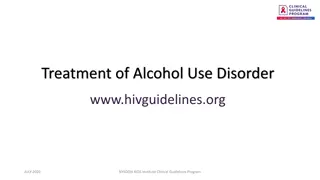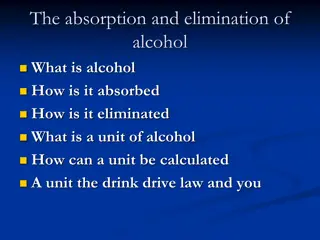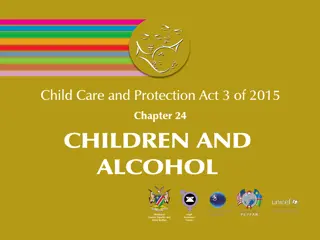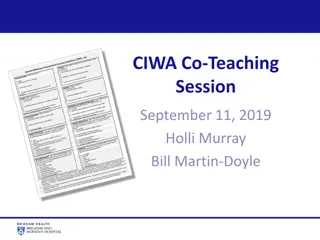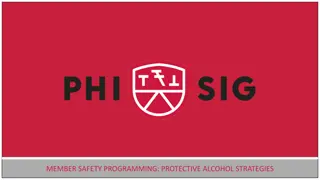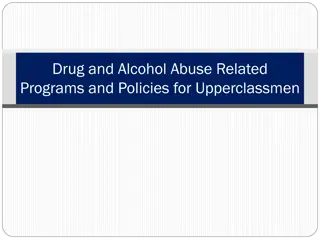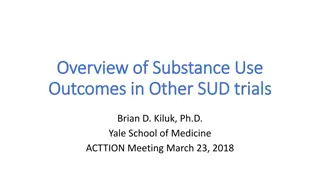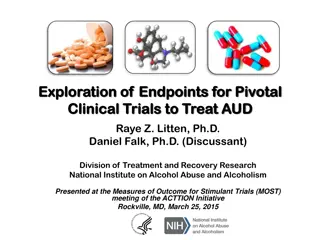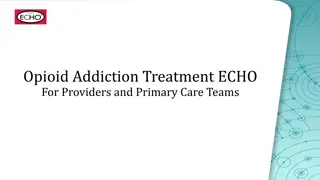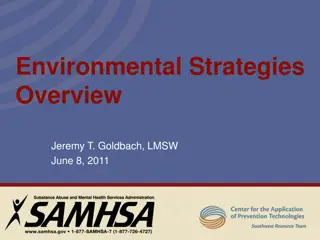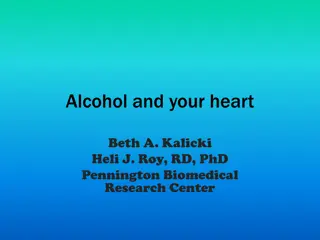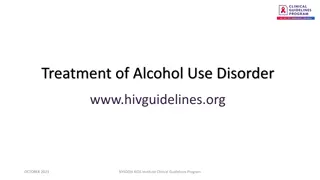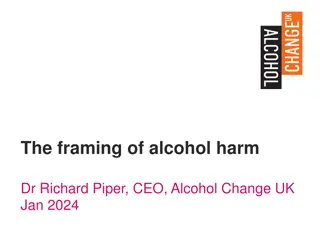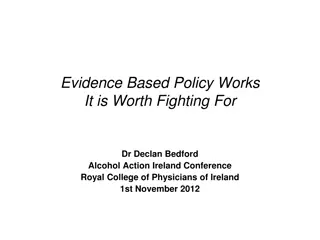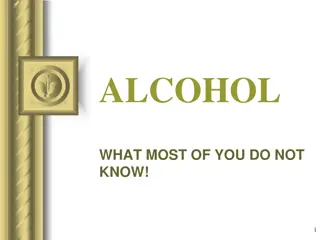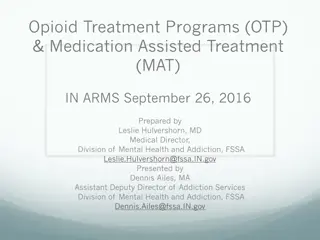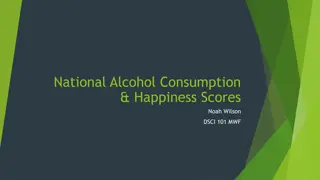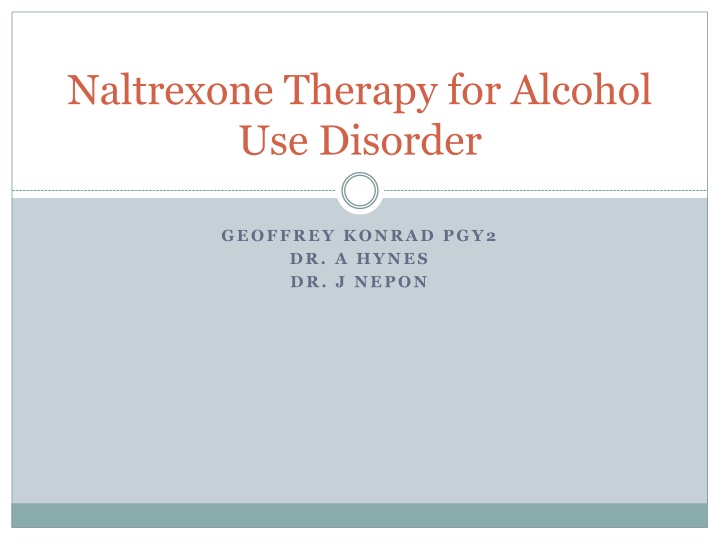
Naltrexone Therapy for Alcohol Use Disorder - Overview and Evidence
Background, epidemiology, and evidence for Naltrexone and Acamprosate in treating Alcohol Use Disorder. Explore guidelines, pharmacotherapy use, and a fact sheet project.
Download Presentation

Please find below an Image/Link to download the presentation.
The content on the website is provided AS IS for your information and personal use only. It may not be sold, licensed, or shared on other websites without obtaining consent from the author. If you encounter any issues during the download, it is possible that the publisher has removed the file from their server.
You are allowed to download the files provided on this website for personal or commercial use, subject to the condition that they are used lawfully. All files are the property of their respective owners.
The content on the website is provided AS IS for your information and personal use only. It may not be sold, licensed, or shared on other websites without obtaining consent from the author.
E N D
Presentation Transcript
Naltrexone Therapy for Alcohol Use Disorder GEOFFREY KONRAD PGY2 DR. A HYNES DR. J NEPON
Objectives? Discuss briefly the background and epidemiology of Alcohol Use Disorders Review the evidence for Naltrexone, Acamprosate Discuss the Fact Sheet and broader project
Background Alcohol Use Disorders are associated with substantial morbidity, mortality, and economic costs Effects are wide spread WHO 2012: 5.9% of all deaths, and 5.1% of global burden of disease related to alcohol
Background In Canada 2002: Economic burden of alcohol related harm was 14.6 Billion 2005: 7.7% of all deaths attributed to alcohol
Epidemiology NESERCIII DSM5 Criteria 12M prevalence: 13.9% Lifetime prevalence: 29.1% 7.7% 12M and 19.8% lifetime respondents sought treatment DSM4 Criteria (2001/2 2012/13) 12M: 8.5% 12.7% Lifetime: 30.3% 43.6%
Evidence Systematic Review and Meta-analysis published in JAMA, 2014 For Naltrexone: NNT to prevent return to any drinking = 20 NNT to prevent return to heavy drinking = 12 For Acamprosate NNT to prevent return to any drinking = 12
Guidelines Guidelines: NIAAA NICE APA CANMAT All support use of Naltrexone, Acamprosate, Disulfiram
Use of Pharmacotherapy Several studies have looked at prescribing habits and trends for AUD Rx VHA: 2007: 3.0% 2009: 3.4% IMS National Prescription Audit 2002: At most 9% filled (any) Rx Primary Care No studies to date have assessed Rx use in primary care settings
Fact Sheet Initial project to prove Naltrexone and Acamprosate under prescribed MCHP Information important now Developed a fact sheet highlighting evidence for Naltrexone and Acamprosate, and how to prescribe
Fact Sheet Sent out to psychiatry department Incorporated feedback Presented at the Annual Scientific Assembly for Family Physicians Immediate, direct feedback
Future Direction Distribution through CPD Medicine at the University of Manitoba Looking into possible ways to remove from EDS
Conclusions Alcohol Use Disorders is a BIG problem Naltrexone and Acamprosate WORK These medications are greatly underutilized Raising awareness and removing barriers to prescription is important for robust patient care
Thank You CODI team Dr. A Hynes Dr. J Nepon Dr. J Sareen Dr. J Bolton Christine Leong
Resources Rehm J., Baliunas D., Brochu S., Fischer B., Gnam W., Patra J.et al. The Costs of Substance Abuse in Canada 2002. Ottawa, ON:Canadian Centre on Substance Abuse; 2006.c World Health Organization. Global Status Report on Alcohol and Health. Geneva, Switzerland: World Health Organization; 2014. Grant B, Goldstein R, Saha T, Chou S, Jung J, Zhang H, Pickering R, Ruan W, Smith S, Huang B, Hasin D. Epidemiology of DSM-5 alcohol use disorder: results from the national epidemiologic survey on alcohol and related conditions III. JAMA Psychiatry. Published online June 3, 2015. Doi:10.1001/jamapsychiatry.2015.0584. Taylor B, Rehm J, Patra J, Popova S, Baliunas D. Alcohol-attributable morbidity and resulting health care costs in Canada in 2002: recommendations for policy and prevention. Journal of Studies on Alcohol and Drugs. 2007;68:36-47.
Resources Jonas D, Amick H, Feltner C, Bobashev G, Thomas K, Wines R, Kim M, Shanahan E, Gass E, Rowe C, Garbutt J. Pharmacotherapy for Adults with alcohol use disorder, in outpatient settings, a systematic review and meta-analysis. JAMA. 2014;311(18):1889-1900. Iheanacho T, Issa M, Marienfeld C, Rosenheck R. Use of naltrexone for alcohol use disorders in the Veterans Health Administration: a national study. Drug and Alcohol Dependence. 2013;132:122-126. Wessell A, Nemeth L, Jenkins R, Ornstein S, Miller P. Medications for alcohol use disorders in a primary care practice-based research network implementation study. Alcoholism Treatment Quarterly. 2014;32:58-66. Mark T, Kassed C, Vandivort-Warren R, Levit K, Kranzler H. Alcohol and opioid dependence medications: prescription trends, overall and by physician specialty. Drug Alcohol Depend. 2009; 99(1-3):345-349.


